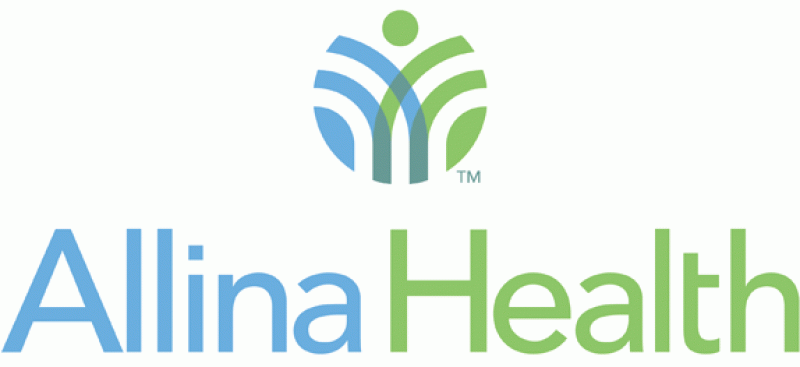Allina Health’s current model for the Partnership Program started in October of 2014. It is now comprised a team of over 120 advisors across all settings of care who are intimately involved with many decisions across the System. Sarah Arnold, who serves as the lead in Allina’s Patient and Family Partnership Program, states “it took a lot of research to design this evolving program. We will always be working to advance partnership efforts across our System so that patients and families are involved and a part of our decision-making for care delivery.” Sarah has been in her role now for about three years. Her clinical, operations, and education background serve the program well as she works with leaders, providers, and patients to develop the Patient and Family Partnership Program.
To change and evolve Allina Health’s program, teams explored numerous resources, including the Institute for Patient and Family Centered Care (IPFCC) and also held multiple phone calls with other organizations around the country. These organizations included Dana Farber Cancer Institute, Intermountain, Massachusetts’s General, and Cleveland Clinic. Allina sought to understand the learnings they had—seeking large and complex organizations to gather relevant learnings for their own System. The biggest challenge Allina Health faced was how to engage patients more broadly, but centrally managed the efforts for the partnership work.
Ultimately, research and internal decision-making led the Allina Health teams to decide on one System, centrally managed, Patient and Family Advisory Council across the entire Allina System (hospitals, clinics, home care). Over time, this Council is getting involved with more strategic decisions for the System, such as offering insight on what should be included on the scorecard for monitoring the System’s performance. Currently, the main Council has ten advisors. Some of the advisors also serve on other System committees like Quality, Patient Experience, Governing Boards, or the Clinical Practice Council. Sarah explains, “patient partners have diverse and robust experiences and have a lot to offer in terms of their individual healthcare journeys to help us deliver better and safer care.”
Partnering with patients on the System-wide Quality Council is a more recent experience. Chief Executive Officer, Dr. Penny Wheeler, brought new leadership and represented a shift for the organization to accelerate the readiness for partnership at new and different levels. Her patient-centric leadership shifted the organization from talking about the patient’s perspective and voice to actually putting patients and families at the same table for discussions. She remains involved by including excerpts about Patient and Family Engagement efforts in her weekly communications, or ensures information is included in other marketing materials.
Participation on the Quality Council encompassed a great deal of preparation that included focused recruitment of volunteers and education on what to anticipate and expect at meetings. The patients also have a strong relationship with the Chair of the Council (a physician leading quality improvement efforts). That physician was part of the recruitment and selection process and onboarding of the new patient members. Allina Health recommends that expectations of all Council members must be clearly outlined with roles and guiding principles for how to engage successfully.
Allina Health also has other opportunities to hear the patient voice. They include:
- Various focus groups
- For example, assisting in the re-design of the Abbott Northwestern Neurological Intensive Care Unit
- An E-Advisor program
- Utilized for brief surveys or telephone interviews
- Patient Panels
- Used for conferences, for example, having patients and families speak about their experiences at a nursing conference
The on-boarding process for patient involvement continues to be developed and is one area the System is focused on now. Allina uses much of the IPFCC information to help orient volunteer patients and families. Initially, new volunteer patients and family members are welcomed through an application and screening process. They come to meet for a one-to-one conversation with program staff, understand confidentiality issues, and learn about Allina Health’s guiding principles for honoring all voices at the table. Additionally, Patient and Family Partnership Program staff members also go through those types of conversations with employees and providers. They host training for committee chairs—and then rely on those chairs to help prepare patients and families for committee meetings. For example, patients serving on a recent Breast Program focus group came early to meet with Sarah and understand basic “ground rules” and expectations for meeting discussion.
“We look forward to a bright future and partnership with our patients and their families as we seek to continually improve our engagement efforts, our journey is one without end, as we acknowledge our partnerships will only grow stronger,” states Sarah.
Caution, look out ahead! Challenges faced by Allina Health:
- Always looking for resources for the patient advisors---to help build their skills as partners with us; this will be more challenging as the program grows
- Giving employees and leaders the skills to be able to facilitate meaningful meetings with patients and families; over time, they will do more of this on their own without in-person presence of program staff; staff and leaders need to be prepared to truly hear the patient voice, and go in a different direction with their input.
- Always searching for internal employee and provider champions of patient and family engagement efforts

